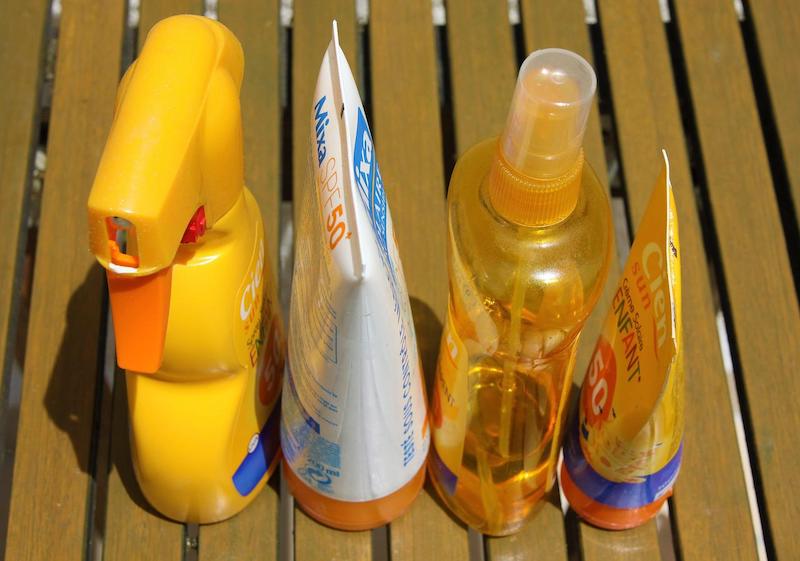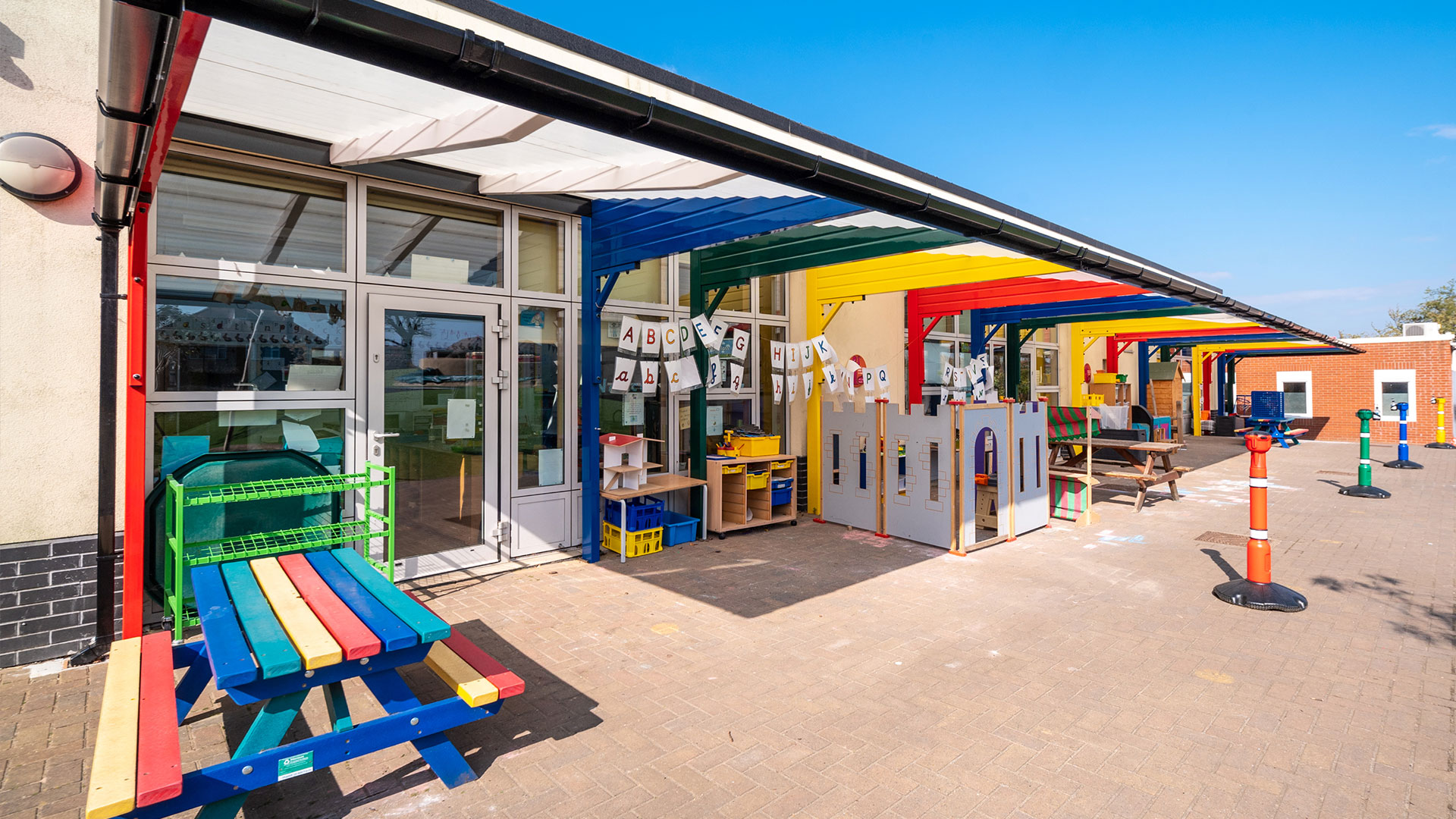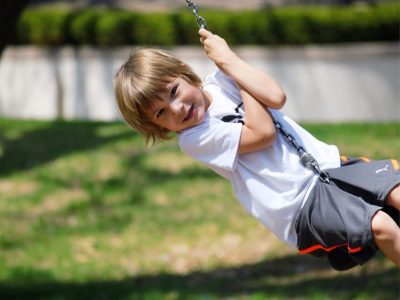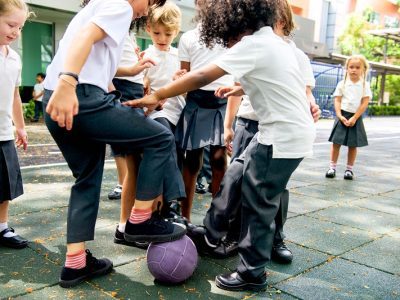Sun safety and shade in schools: what you need to know
Posted on | Posted in Education
In the hotter summer months, it’s important to remember the importance of sun safety and the need for shade in schools. We’ve answered some of the most asked questions about how to be more sun-safe in schools – here’s what you need to know.
What is the sun protection policy for primary schools?
There is no standardised policy for sun protection in UK primary schools. However, most schools will have their own guidelines and policies in place in order to protect children from the sun’s harmful rays, including the provision of shade in schools. Here are some common practices and recommendations followed by primary schools:
- Allowing children to bring and apply sunscreen during hot weather.
- Encouraging students to bring hats with a wide brim that covers the necks and ears. For some schools, this can even be part of uniform policy in summer.
- Adjusting outdoor activity schedules to avoid the peak hours of sunlight.
- Providing shaded areas for playtime and outdoor lessons. This could include trees, canopies, gazebos or shade sails.
- Offering education and supporting awareness. Educating children about the importance of sun safety and seeking shade in schools can be done through various means such as classroom discussions, assemblies or posters.
How can I protect my skin from sun in school?
According to the Skin Cancer Foundation, around 23 percent of lifetime UV exposure occurs before the age of 18, so it’s important that children are aware of the importance of sun safety – particularly when they’re in school.
The sun’s rays are most powerful between the hours of 10am and 3pm, with the sun at its highest point around noon, when children tend to be outside. This means offering adequate shade in schools is important. Teachers and parents alike also have a duty of care to teach children how to best protect their skin. This should include:
- Applying a high-factor sunscreen
- Wearing a wide-brimmed hat and sunglasses
- Avoiding direct sunlight by seeking out shade in school
Do children put sunscreen on at school?
All schools will have slightly different policies relating to sun safety, so there’s no clear-cut answer. If a school allows children to bring in sunscreen from home, a high SPF is recommended. The NHS says children should wear at least SPF30 sunscreen, but the higher the better. We’d recommend SPF50+ for the best possible protection.

Can teachers put sunscreen on students?
Many parents are unsure whether teachers can put sunscreen on students, and there is some misinformation about the legalities surrounding it. In short, individual schools will have their own health & safety policies, but by law, teachers are allowed to help children apply sunscreen.
The Department for Education says it expects schools to take a “sensible approach” to the issue, and the Health and Safety Executive (HSE) says that “health and safety legislation does not prevent school staff from applying or helping pupils apply sun cream.”
In cases where a school’s internal guidelines prohibit student/teacher contact, parents are often asked to apply sunscreen to their children before school. In these cases, a strong ‘once a day’ sun cream with a high SPF is recommended. Children should also be taught about the importance of seeking shade in school, particularly during their lunch break when the sun is at its highest.
How to teach children sun safety?
Once a child is of school age, they’re old enough to learn the basics of sun safety. Children should be taught about the importance of sun protection, including
- How to apply sunscreen. Teaching a child to apply sunscreen to themselves is one way to get around the potential issue of teachers having physical contact with students. Child-friendly formulas like sprays and roll-ons may be easier for a child to use.
- Making sure to stick to shaded areas at the hottest times of the day. If the playground had dedicated shelter, like a school canopy, this is ideal. If not, playing in a shaded part of the playground or under the shade of some trees is a better option than in direct sunlight
- The benefits of protective clothing like wide-brimmed sun hats or a cap, and sunglasses to help protect their eyes from UV.
There are many great resources that schools can use in order to best teach pupils about the importance of sun safety and the need for shade in schools. Sun Safe Schools is a national accreditation programme that provides primary schools with free resources to help them safeguard children against UV. Their downloadable resources include a sun safety assembly guide, a storybook, and fun activity sheets.

What are the 5 S’s of sun safety for kids?
The 5 S’s of sun safety for kids are a set of guidelines designed to protect children from sun damage while in part emphasising the role of shade in schools. By using fun alliteration, they are designed to be a simple and memorable way for kids and adults alike to remember and implement sun safety guidelines. Here they are…
- SLIP on protective clothing. Covering skin with clothing is one of the best ways to stay protected from the sun’s harmful effects. Remember to keep shoulders covered, and go for a tight weave or UV protective clothing if possible.
- SLOP on sunscreen. A broad-spectrum sunscreen with an SPF of 30 or higher should be applied to all exposed skin. Don’t forget the neck, ears and back of the hands.
- SLAP on a hat. When children are spending time outside in the sun, a wide-brimmed hat that shades their face, neck and ears offers great sun protection.
- SEEK Always encourage kids to seek shade in school whenever possible, especially during lunchtime when the sun is at its strongest and highest. Trees, umbrellas and canopies can all offer a good level of protection.
- SLIDE on sunglasses. Sunglasses that provide UVA and UVB protection protect children’s eyes from harmful UV rays. Look for sunglasses with 100% UV protection or labelled as UV400.
It’s important that schools adopt safe sun policies and prioritise shade in schools in order to keep their pupils as safe as possible. This could involve teaching children about the importance of sun safety in classrooms, encouraging children to drink plenty of water during the summer to avoid dehydration, as well as ensuring children have adequate protection from the sun when out on the playground. School shelters and canopies are a perfect way to make sure that children have access to safe, shaded areas during the hotter seasons.
Resources
If you’re looking for further information, please see below for some of the resources we found to help put this article together.
NHS UK: Sunscreen and sun safety
British Skin Foundation: Sun Safety Advice for Parents
Sun Safety at School: skincancer.org
Skcin: Sun Safe Schools Accreditation Programme
National Childbirth Trust: Sun safety for kids

We hope this answered some of your questions about sun safety and shade in schools. If your school could benefit from a play area canopy, why not get in touch to talk through your options?





